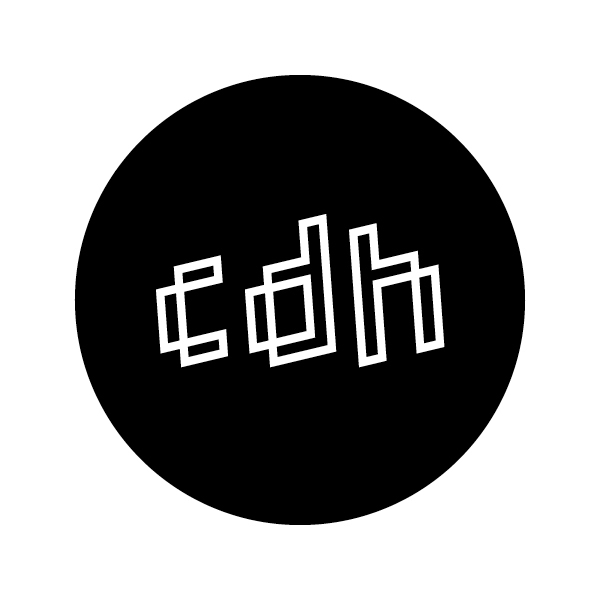- CDH events are open to the TMU community and beyond.
- Also, check out the workshops hosted by the Collaboratory!
The Centre for Digital Humanities (CDH) is temporarily located on the 4th floor of the Podium (POD) building (where the School of Law is currently situated) and is planning to have a permanent home in the Library building (LIB) in the future. CDH events are held virtually (on Zoom) and in-person in the TMU Libraries’ Collaboratory.
Join us! If you have an idea for a CDH-hosted event or a question, please contact CDH Director Jason Boyd (jason.boyd@torontomu.ca) or CDH Manager Reg Beatty (rbeatty@torontomu.ca).
CDH Virtual
Drop-Ins
Each month, weekly drop-ins will be dedicated to a specific theme. Tiny Tools Tour, Web Walks, and DH Workbench are explorations of a digital resource or tool for research, creativity, and/or teaching. Stories in Play features discussion of entries in the Playable Stories Archive and episodes of the Playable Stories: Unarchived podcast, both of which are focused on storytelling in games. Reading Bytes is a reading group for discussion of published digital humanities scholarship. DH@TMU Talks feature CDH members presenting their research.
SMALL WEB WORKSHOP
Hybrid Event: Zoom and In-person at the Collaboratory
Friday December 5
10:00am-noon EST
Making Images Talk: writing inside the poetic web.
Reg Beatty
This workshop will examine the practice of Philippine-born internet artist Chia Amisola, their approach to creating work for the web, as well as their multi-layered browser-based performances.
We will then follow a number of tutorials that Amisola has posted recently. These give unique insights into their procedures and thinking and suggest new directions for anyone interested in pursuing ‘the poetic web.’
Amisola wants us to see the internet, and our lives online, in a different way. In their own words, “Chia Amisola is an artist of agencies and ambiences. Their work is devoted to the internet’s loss, love, labor, and liberation.”
This workshop does not require previous knowledge of making web pages and can act as an introduction.
Finding The TMU Library Collaboratory:
The main entrance to the Library Collaboratory is via the SLC Building.
Elevator: Take the elevator (opposite the main entrance) up to the 3rd floor of the SLC Building. Exit and turn left: the Library Collaboratory is at the end of the hall, marked with large yellow doors.
Stairs: Take the main stairs (on the right of the entrance) up to the second floor. Keep to the right and follow the stairs up to the third floor. Walk past the DMZ and the DME to the end of the hall. The Library Collaboratory is at the end of the hall, marked with large yellow doors.
This course can be counted towards the Canadian Certificate in Digital Humanities/humanités numériques. More information at: https://ccdhhn.ca/.
SMALL WEB WORKSHOP
Hybrid Event: Zoom and In-person at the Collaboratory
Monday December 8
10:00am-noon EST
Making Images Talk: Writing Visual Novels with Decker.
Jason Boyd
Decker is a multimedia platform influenced by HyperCard and created by Internet Janitor. It can be used for creating and sharing interactive documents, with sound, images, hypertext, and scripted behavior. In this workshop, participants will be introduced to two Decker libraries (Dialogizer and Puppeteer) designed to facilitate the creation of visual novels.
The Decker app can be used in-browser or be downloaded to your computer.
This workshop does not require previous knowledge of Decker and can act as an introduction.
Finding The TMU Library Collaboratory:
The main entrance to the Library Collaboratory is via the SLC Building.
Elevator: Take the elevator (opposite the main entrance) up to the 3rd floor of the SLC Building. Exit and turn left: the Library Collaboratory is at the end of the hall, marked with large yellow doors.
Stairs: Take the main stairs (on the right of the entrance) up to the second floor. Keep to the right and follow the stairs up to the third floor. Walk past the DMZ and the DME to the end of the hall. The Library Collaboratory is at the end of the hall, marked with large yellow doors.
This course can be counted towards the Canadian Certificate in Digital Humanities/humanités numériques. More information at: https://ccdhhn.ca/.

